Brazilian Wax 101: Everything You Need to Know Straight From the Pros
- The Shampoo Lounge

- Dec 9, 2023
- 5 min read
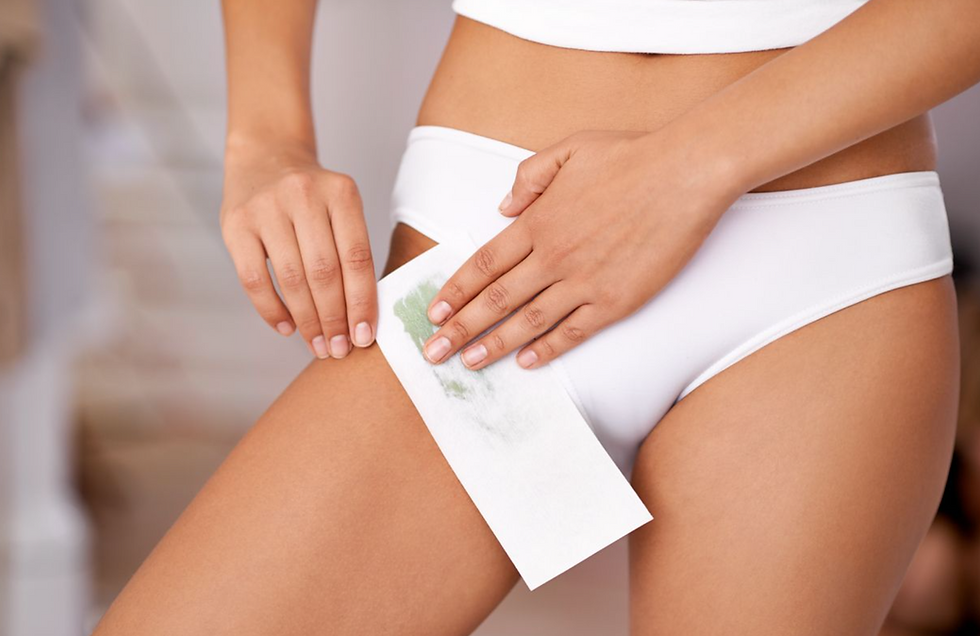
Of all the options we have for waxing the bikini area, nothing is more intimidating than the Brazilian wax. Silky smooth skin everywhere in that region has always been appealing for those prepping for swimsuit season or just wanting to go completely hair-free—though it comes at a price. The lore of how painful a Brazilian wax can be has most opting for their trusty razor instead.
But if you’re tired of the razor bumps and ingrown hair that shaving your pubic region inevitably comes with and want to get your first Brazilian wax, then you’ll definitely want to read this before your first time. From how to prep, what to expect, and best post-wax practices, here, experts break down everything you need to know about getting a Brazilian wax.
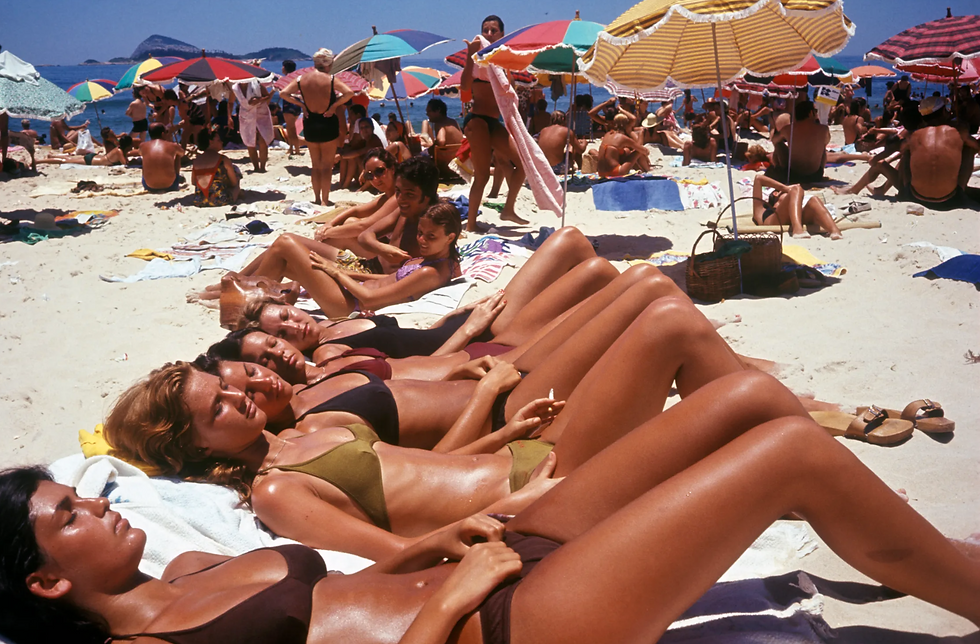
What is a Brazilian wax?
As Kathleen Hamilton, esthetician and corporate trainer at Woodhouse Spa, describes it, a Brazilian wax is a hair removal procedure that involves the complete removal of pubic hair. This means all hair in the front, back, and everything in between will be waxed off by a professional. “It might feel a bit ‘intimate,’ but the result is super smooth skin that lasts for weeks,” says Hamilton.
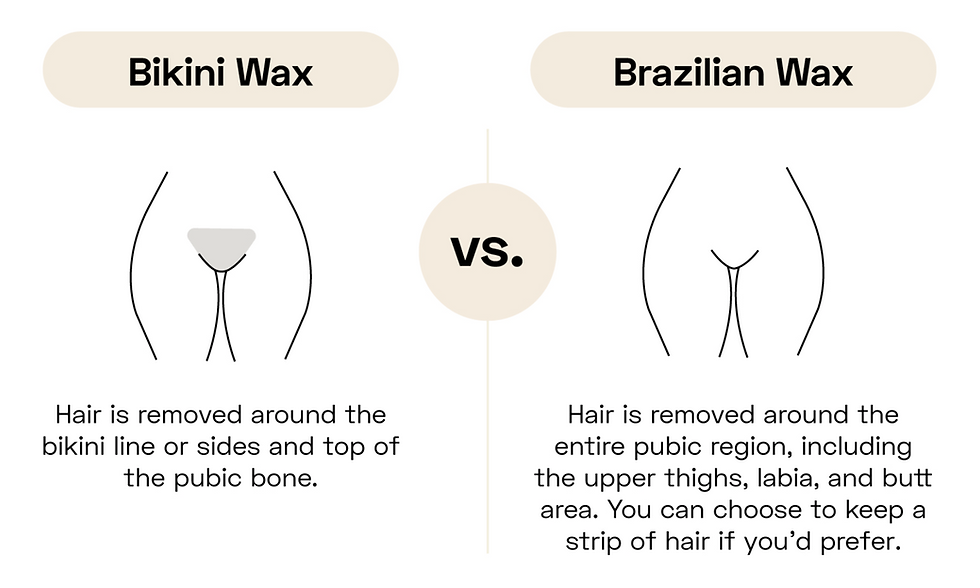
Brazilian Wax vs Bikini Wax
There is only one key difference between a Brazilian wax and a bikini one: how much hair is removed. Hamilton says that the bikini wax only removes hair along the bikini line, shaping it or removing some hair to create a neater appearance outside of the more intimate parts.
But the waxing process for both is generally similar. “Both Brazilian and bikini waxes use warm wax to remove unwanted hair, done by trained professionals,” she says. “The wax is applied, quickly removed, and takes the hair from the root. The results are temporary, with eventual regrowth, but it may take some time before hair becomes noticeable again.”
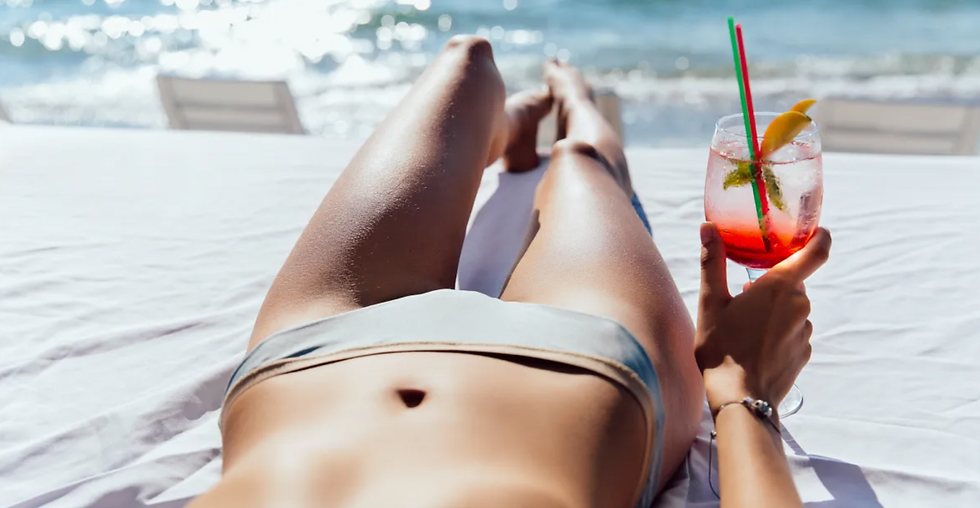
The Downsides of a Brazilian Wax
Other than the discomfort you may feel during treatment, other side effects include redness, discoloration, bumps, and ingrown hairs says board-certified dermatologist Tiffany Libby, MD. These should subside in one to three days.
Libby wouldn’t recommend a Brazilian wax to those who have very sensitive skin, anyone on medications like oral retinoids, and those undergoing chemotherapy or radiation.

Will it hurt?
Unfortunately, a Brazilian wax does come with some pain as you are waxing a very sensitive area to begin with. But the pain will be different depending on the person. “Everyone’s pain tolerance varies,” says Libby. “The pain can vary from mild to moderate discomfort to brief sharp pain or tenderness.”
The good news: there are plenty of ways to mitigate the discomfort. She says you can take a pain reliever like acetaminophen (a.k.a Tylenol) about 30 minutes to an hour before getting waxed or use over-the-counter lidocaine cream right before to minimize any sensitivity. She says that even applying an ice pack before the treatment can be helpful.
Hamilton says that some find the pain lessens the more you get these waxes, but always consult with your technician to figure out how to get the most comfortable during treatment. “Don’t be shy about communicating with your esthetician,” she says. “They’re there to help you look and feel your best in the end.”
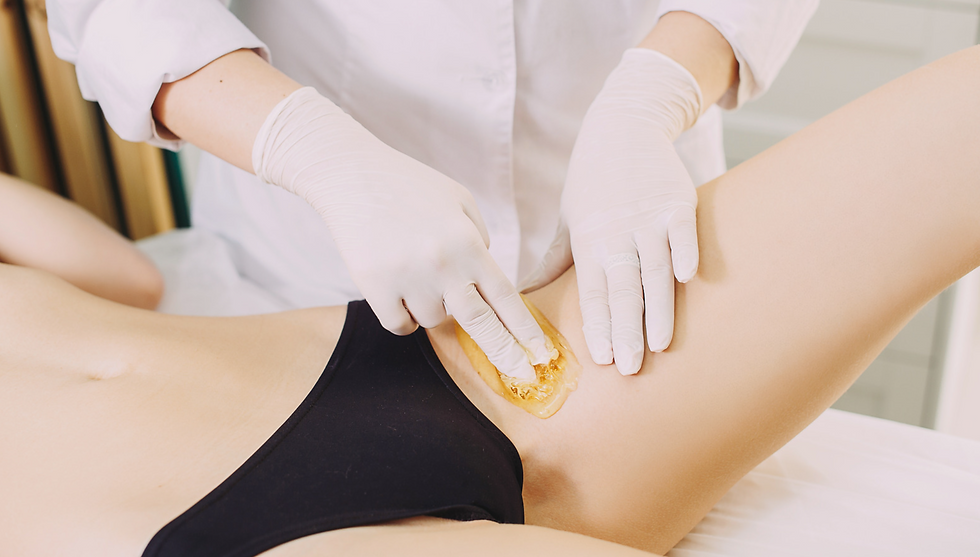
How to Prep
Before booking that waxing appointment, you’ll want to make sure there’s enough hair on your pubic area to be removed. Hamilton says that you’ll want to aim for hair follicles that are about a quarter to a half-inch long. You’ll also want to gently exfoliate a day or two before to prevent ingrown hairs.
If you happen to be on your period on the day of treatment, both Hamilton and Libby say you can still go through with treatment. Libby just notes that there may be increased sensitivity to pain during your menstrual cycle as your hormone levels shift and a greater chance of inflammation. “It’s a good idea to plan accordingly,” adds Hamilton.
Also be sure to go to a place with estheticians with waxing experience. It’s important, especially for first-timers, to go to a waxer that can minimize any negative side effects and give you the most comfortable experience possible.
What to Expect
First, you’ll sit with your esthetician for a consultation. Hamilton says they want to know your preferences and needs before waxing anything off. “Since this is a personal service, we'll talk you through what to expect and maintain open communication throughout,” she says.
You’ll be laying down for the treatment with your bottom half exposed. Your esthetician will then thoroughly cleanse the areas they’ll be waxing to ensure the wax adheres effectively. They’ll remove hair in small sections, applying warm wax (never hot wax that will burn your skin) and then quickly removing it. She says that estheticians may apply pressure to minimize comfort and sometimes they might need your help in holding certain areas taut to help the process move along.
For precision and a clean surface, she says they might use tweezers and scissor if needed. Once they’re done, they’ll help you with a post-waxing regimen to make sure your skin stays smooth and healthy.
Post-Care
For aftercare, Hamilton recommends avoiding saunas, hot baths, rigorous workouts, or anything that might make the skin too hot for the first day or so. She also suggests wearing loose clothes and cotton underwear as any friction from tight clothing might cause irritation. You’ll also want to avoid direct sunlight on newly smooth skin for at least 48 hours.
Libby says that it’s common to experience redness, mild swelling, and sensitivity post-wax. For your post-wax skincare regimen, you’ll want to avoid irritating ingredients like fragrance or harsh exfoliators and she recommends using products, such as an oil or creams, with calming and hydrating ingredients like glycerin, hyaluronic acid, and ceramides. She says you can also apply a 1 percent OTC hydrocortisone one to two times a day for the first few days to help reduce inflammation and minimize discomfort.
You can expect a Brazilian wax to last between three to six weeks, says Hamilton, depending on your hair growth pattern. For upkeep, she recommends scheduling follow-up appointments every four to six weeks.
Preventing Ingrown Hairs
Exfoliation is key to keeping ingrown hairs at bay, says Libby, who explains that it will unclog pores and reduce inflammation. She recommends something like The First Aid Beauty Ingrown Hair Pads into your post-care regimen. “[It’s] an excellent product to keep on hand, which uses glycolic and salicylic acids to gently exfoliate away dead skin cells, unclog pores, and prevent ingrown hairs,” she says. “It also has witch hazel and aloe extract to calm inflammation and soothe irritated skin.”
Hamilton adds that you’ll want to keep the area well-hydrated with a light and fragrance-free moisturizer. You can ask your esthetician for some recs or try a nourishing oil, like the Fur Ingrown Concentrate or the DeoDoc Calming Oil.
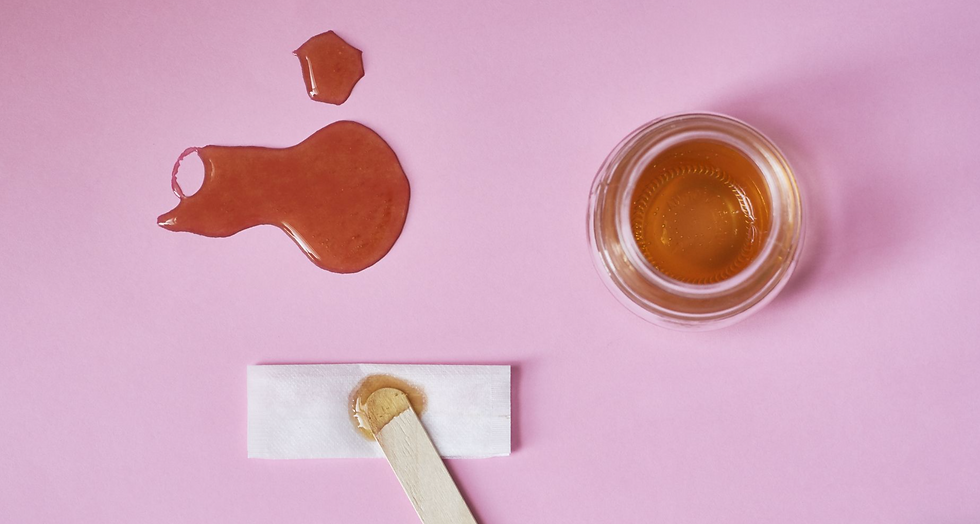
DIY Brazilian Wax
Technically it is possible to give yourself an at-home Brazilian wax. But just because you can do it, doesn’t mean you should. “It’s not recommended for several reasons,” says Hamilton. “It can pose sanitation issues and unless you have remarkable flexibility, it can be quite challenging to reach [the intimate parts] effectively. Let the pros stick to this one.”
We've get you ready for your first time brazilian wax experience!
The Shampoo Lounge has been attending to an international and Indonesian clientele since 2012 so check out our our website and our TripAdvisor reviews! We can’t wait to have you in. BOOK NOW: https://www.shampoolounge.com/bookingblog
Article written by Audrey Noble for Vogue


Comments